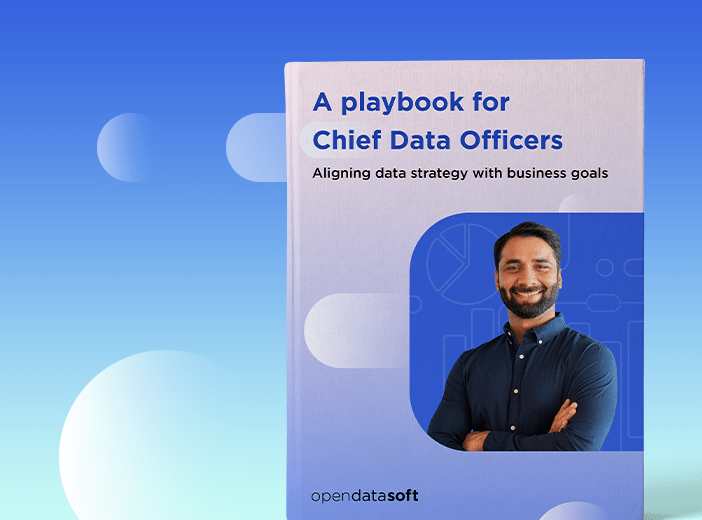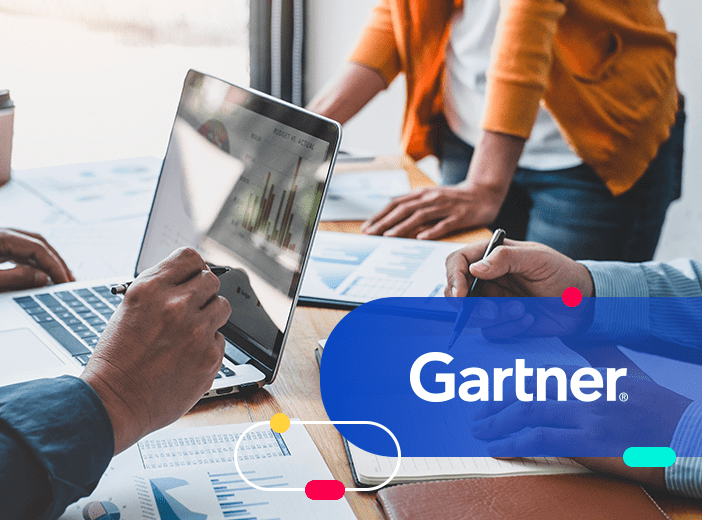Data custodians and data stewards – understanding the differences
Turning data into value requires organizations to have the right team and skills in place - including data custodians and data stewards. We explain the differences in their roles and how they successfully work together.

Organizational data management is continually getting harder. More complex data ecosystems, a greater range of sources, the sheer volume of data, and the growing business need to encourage data consumption means that effective management requires a wide range of skills and capabilities.
These resources go far beyond technical infrastructure and tools. Successful data teams cover multiple roles, balancing technical IT skills, data management and business understanding. These are delivered by data custodians, data stewards and data owners/data product owners – but what does each of these jobs entail and how do they differ? This blog outlines what these different functions cover and how you can structure your data team to drive success.
Outlining the roles of data custodians and data stewards
The number of data-related roles has increased dramatically over the last few years, as the need for specialist skills has increased. Chief Data Officers (CDOs) of large organizations lead complex data and analytics teams with employees located across the business, particularly as they adopt more federated models to support concepts such as data products and data mesh. Drawing on research from Gartner, this previous blog explains how organizations can structure their teams to drive data consumption at scale. Some of the key roles are data custodians, data stewards and data owners.
What is a data custodian?
Data custodian is a technical role, and is rooted in IT. As the custodian of data, they are directly responsible for the technical side of data management, including the storage, security, and accessibility of all data assets on an ongoing basis. They work to implement data governance processes to protect data from unauthorized access and use and ensure compliance with regulations such as the GDPR and CCPA. As part of this they ensure that all data assets meet accuracy, security, quality and compliance standards. Essentially they are the technical bedrock of both data management and data consumption efforts.
The responsibilities of data custodians include:
- Managing the technical infrastructure that stores data, such as databases or other storage locations
- Guaranteeing that data is stored in a compliant way that ensures availability, security and protection, including managing back-ups
- Implementing security, privacy and governance policies, especially around external legislation and standards
- Preventing unauthorized access to data, whether from external threats or internal users, logging and auditing access
- Ensuring data is high-quality and accurate at a technical level and that it meets specific technical standards for each dataset
This means they require a mix of technical, compliance, and soft skills. They have to be able to manage data and tools at a technical level, and understand regulatory requirements, but also to work closely with other members of the data team as well as the wider business.
What is a data steward?
A data steward is a subject matter expert who ensures that data is managed and performs according to policies.They are commonly responsible for data content, context, and associated business rules. Essentially they act as data guardians, ensuring there is a good data governance strategy across their organization to guarantee the quality, usability, and security of data.
The responsibilities of data steward include:
- Documenting data to make it easy to access and consume, including through metadata
- Ensuring the data itself is high quality, removing duplicate, out of date or incomplete entries, fields and datasets
- Encouraging data consumption by making data accessible to the wider business
- Set access controls and policies to define who can access specific data to protect confidentiality and ensure compliance
In their role, the data steward aims to turn data into value for the organization, helping make it a strategic asset that drives benefits for the business. Achieving this requires a range of skills – they need to be a data professional that is proficient at using a range of technical tools and programming languages, but also must have an understanding of the company’s business and objectives. This enables them to balance protecting data with finding opportunities where it will deliver value for the organization and help it achieve its aims.
What is a data owner/data product owner?
Data owners are responsible for specific datasets or data assets within the business. Often they are part of a particular business unit or department, and have a thorough and in-depth understanding of the data assets they are responsible for, from both a business and technical viewpoint. They determine how their data assets are used and who can access them.
A data product owner takes the idea of ownership a step further. They are responsible for specific data products, highly-consumable, business focused data assets with an ongoing requirement from a large audience. They work to first create, then monitor, maintain and update their data product(s), collaborating with users to ensure they continue to meet their specific requirements.
The responsibilities of a data owner include:
- Maintaining the quality and reliability of their data assets/data products
- Sharing the data asset, such as through data marketplaces, to ensure that it is discovered and consumed by the right audiences
- Collaborating with users, and responding to queries about the data itself
- Managing workflows to share data with users, including enriching it to improve quality and usability
While they understand their specific data asset, data owners do not have the in-depth data or technical skills of their data steward or data custodian colleagues. They know data and technical terms but are more focused on the data they control, what it means and how it can help the wider business.
Data stewards vs data custodians - the differences
How do you compare the roles of data custodians vs data stewards? While they both have responsibilities for data, data custodians and data stewards are distinct functions requiring specific skills.
Data custodians are technically trained, IT experts who understand and manage how data is stored, accessed and protected. They don’t necessarily need to know what the data covers or means – just that it meets pre-set technical specifications around quality, governance and compliance and is stored securely. They are therefore essential to data management at a time when the volume, velocity and variety of data is continually increasing within organizations.
By contrast, data stewards have a much deeper understanding of the data itself, and are accountable for its quality and usability. They are responsible for what the data covers and why it has been created. While they have some technical knowledge, they don’t have the detailed understanding and skills to manage data administration, such as scheduling backups. Rather than just data management, they are focused on helping drive its consumption and effective usage.
Building a balanced team to deliver effective data management
As can be seen, the scale and complexity of an organization’s data stack and infrastructure requires a team of people and skills to manage it and make it available across the business. Data stewards and data custodians therefore work together to manage the different aspects of data, ensuring that it flows freely through the business and provides accurate, trustworthy, compliant and secure information to the right people. The benefits of this team approach include:
- The availability of quality, reliable data
- Data security and compliance
- Robust data governance
- Data that is understandable by users, and meets business needs, especially through data products
However, simply preparing data so that is trusted and reliable does not drive consumption on its own. What is required is that data is made available to business users in ways that they can easily and seamlessly discover and consume, without needing support from either data stewards or data custodians.
This need to increase consumption is leading to the growing adoption of self-service data marketplaces. This centralized online space provides a one-stop-shop for all of an organization’s data. It is accessible through a seamless, intuitive and self-service experience, modeled on an e-commerce marketplace, and includes features such as AI-driven search, the ability for data users to collaborate with data owners, and granular access management to safeguard data and ensure good governance. Data lineage capabilities enable data teams to track and monitor usage, allowing them to continually improve the experience and available data. All of this drives increased value from data through greater consumption across the business, ensuring ROI from data investments.
Taking a team approach to data management
While roles such as data custodian, data steward, and data owner are relatively new, they are vital to meeting the requirement to manage data at scale and increase its consumption. When combined with a self-service data marketplace they turn data into powerful insights that are accessible to everyone within the business, creating value, efficiency and innovation.
At Opendatasoft we have over 13 years of experience working with all roles within data teams. Contact us to learn more about how we can help you deliver on your data aims.




